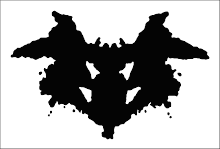Everything psychological is biological...
In other words, "Mind is what brain does..."
Objectives (think about these as you read):
In other words, "Mind is what brain does..."
1. Describe the general structure, organization and function of the central and peripheral nervous systems.
2. Describe the structure and function of neurons and other cells in the nervous system.
3. How and why do neurons communicate with each other?
4. What are “action potentials,” and how do they work?
5. Compare the somatic and autonomic parts of the peripheral nervous system.
6. Compare the important neurotransmitters.
7. Describe the endocrine system. What does it do?
8. Describe the various parts of the limbic system and what they do.
9. Describe the various parts of the cerebral cortex and what they do.
10. Be able to explain how damage to a part of the brain may affect the organism.
Flash-Cards
1. Key Term Flashcards: There are 63 Key Terms highlighted in the textbook. Do at least 45. Do 5 to 7 per day and you’ll be fine.
2. Pictures/diagrams are important to this unit!
3. Don’t freak out. I know it’s a lot of flashcards. It will be worth memorizing and understanding the key terms. You will need to review the flashcards before quizzes and exams in class and as you study for the AP exam.
+++++++++++++++++++++++++++++++++++
This site has some very easy to read descriptions of parts of the brain. Use it to help you understand what's between your ears if our book gets too confusing. http://brainmadesimple.com/index.html
+++++++++++++++++++++++++++++++++++
This site has some very easy to read descriptions of parts of the brain. Use it to help you understand what's between your ears if our book gets too confusing. http://brainmadesimple.com/index.html
Our friend Hank discusses the chemistry of our brain...
Try this EdPuzzle link which asks you some questions as the video plays to check to see if you are understanding important points. It was developed by AP Psych teacher Mr. Mcentar.
And Hank discusses the overall structure of the brain... from phrenology to Phineas to the old brain and the new brain.
Here is the EdPuzzle link for this video... try it out! Remember, quizzing yourself and connecting new information to old is the best way to learn new content.



